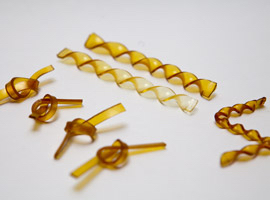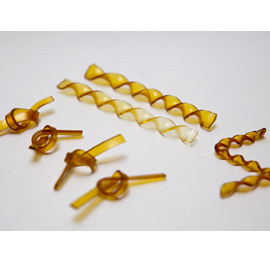New classes of polymers don’t come along very often, so it was kind of a big deal when Ludwik Leibler and his team at the Laboratoire Matière Molle et Chimie at ESPCI ParisTech created vitrimers. By combining the properties of two different classes of materials, they invented a self-healing polymer that can switch from a solid to a pliable state simply by a temperature change. The ramifications are profound, including the capability to heal patients and, to some extent, the planet. The impact of vitrimers on myriad applications is one of the topics that Helen Lentzakis, PhD, will discuss during a Center Stage presentation—Get Smart with Smart Materials—at Expoplast, which comes to Montréal, QC, Canada, on Nov. 30 and Dec. 1.
 Lentzakis is currently an application specialist at Group NanoXplore Inc. (Saint Laurent, QC), the largest Canadian producer of graphene, but she has special insights into vitrimers, as she pursued her post-graduate degree at ESPCI ParisTech, where the material was invented. “The work conducted by Leibler and his team received the European Inventor Award in the research category in 2015,” she notes. “The material combines the properties of thermoplastics and thermosets. The bond exchange reactions allow you to rearrange the material’s topology while the bonds remain essentially unchanged. It’s a thermoset network, and therefore has strong mechanical properties, but it can be recycled when processed at higher temperatures, when the bond exchange reactions are active,” explains Lentzakis.
Lentzakis is currently an application specialist at Group NanoXplore Inc. (Saint Laurent, QC), the largest Canadian producer of graphene, but she has special insights into vitrimers, as she pursued her post-graduate degree at ESPCI ParisTech, where the material was invented. “The work conducted by Leibler and his team received the European Inventor Award in the research category in 2015,” she notes. “The material combines the properties of thermoplastics and thermosets. The bond exchange reactions allow you to rearrange the material’s topology while the bonds remain essentially unchanged. It’s a thermoset network, and therefore has strong mechanical properties, but it can be recycled when processed at higher temperatures, when the bond exchange reactions are active,” explains Lentzakis.
Read more













